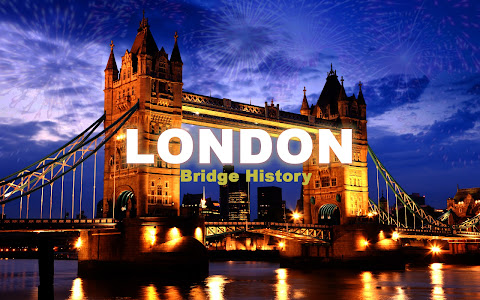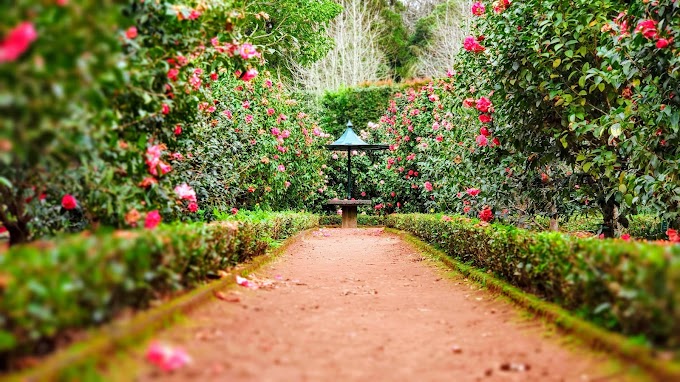London Bridge History
London Bridge :
The projections of the current London Bridge rest a few meters above normal banks of rock, sand and earth. From the late Neolithic period, the southern bank shaped a characteristic thoroughfare over the encompassing bog and swamp of the waterway's estuary; the northern climbed to higher ground at the current site of Cornhill. Between the banks, the river Thames might have been crossed by portage when the tide was low, or the ship when it was high. The two dikes, especially the northern, would have offered stable footholds for boat traffic up and downstream - the Thames and its estuary were a significant inland and Continental shipping lane from essentially the ninth century BC.
why is London Bridge famous?
where is the real London Bridge?
is London Bridge a good brand?
London Bridge History:
There is archaeological proof for dispersed Neolithic, Bronze Age, and Iron Age settlements close by, yet until a scaffold was worked there, London didn't exist. A couple of miles upstream, past the stream's upper flowing reach, two old passages were being used. These were evidently lined up with the course of Watling Street, which drove into the heartlands of the Catuvellauni, Britain's most impressive clan at the hour of Caesar's intrusion of 54 BC. Sometime before Claudius' success of AD 43, power moved to the Trinovantes, who held the district upper east of the Thames Estuary from a capital at Camulodunum, these days Colchester in Essex. Claudius forced a significant Colonia at Camulodunum and made it the capital city of the new Roman region of Britannia. The principal London Bridge was worked by the Romans as a feature of their street building program, to assist with merging their success
Roman Bridge:
It is conceivable that Roman military specialists constructed a boat-type span at the site during the triumph time frame (AD 43). An extension of any sort would have given a fast overland easy route to Camulodunum from the southern and Kentish ports, along the Roman streets of Stane Street and Watling Street (presently the A2). The Roman streets prompting and from London were presumably worked around AD 50, and the stream crossing was conceivably served by an extremely durable wood span. On the moderately high, dry ground at the northern finish of the scaffold, a little, pioneering exchanging and delivering settlement flourished and developed into the town of Londinium. A more modest settlement was created at the southern finish of the extension, in the space presently known as Southwark. The scaffold might have been annihilated alongside the town in the Boudican revolt (AD 60), however, Londinium was modified and at last, turned into the authoritative and commercial capital of Roman Britain. The extension offered continuous, mass development of the foot, horse, and wheeled traffic across the Thames, connecting four significant blood vessel street frameworks north of the Thames with four toward the south. Only downstream of the scaffold were significant quays and warehouses, advantageous to seagoing exchange among Britain and the remainder of the Roman Empire.
Early Medieval Bridges types:
With the finish of Roman rule in Britain in the mid-fifth hundred years, London was continuously deserted and the scaffold fell into deterioration. In the Anglo-Saxon period, the waterway turned into a limit between the emanant, commonly threatening realms of Mercia and Wessex. By the late ninth 100 years, Danish intrusions incited essentially a fractional reoccupation of the site by the Saxons. The scaffold might have been reconstructed by Alfred the Great not long after the Battle of Edington as a feature of Alfred's redevelopment of the region in his arrangement of burhs, or it might have been revamped around 990 under the Saxon lord Ethelred the Unready to rush his troop developments against Sweyn Forkbeard, father of Cnut the Great. A skaldic custom portrays the extension's obliteration in 1014 by Ethelred’s partner Olaf, to separate the Danish powers who held both the walled City of London and Southwark. The earliest contemporary composed reference to a Saxon scaffold is c.1016 when recorders notice how Cnut's boats skirted the intersection, during his conflict to recapture the privileged position from Edmund Ironside.
Following the Norman success in 1066, King William I remade the scaffold. It was fixed or supplanted by King William II, annihilated by fire in 1136, and remade in the rule of Stephen. Henry II made a religious society, the "Brethren of the Bridge", to direct all work on London Bridge. In 1163, Peter of Cole church, minister and superintendent of the scaffold and its brethren, directed the extension's last reconstruction in wood.
Old London Bridge (1209-1831):
After the homicide of his previous companion and later rival Thomas Becket, Archbishop of Canterbury, the contrite King Henry II dispatched another stone extension instead of the old, with a church in its middle committed to Becket as a saint. The diocese supervisor had been a local Londoner and a famous figure. The Chapel of St Thomas on the Bridge turned into the authority beginning of the journey to his Canterbury sanctuary; it was more fantastic than some town area temples and had an extra waterway level entry for anglers and ferrymen. Building work started in 1176, administered by Peter of Colechurch. The expenses would have been huge; Henry's endeavour to meet them with charges on fleece and sheepskins presumably led to a later legend that London Bridge was based on fleece packs. In 1202, preceding Colechurch's passing, Isembert, a French priest who was eminent as an extension manufacturer, was delegated by King John to finish the task. Development was not completed until 1209. There were houses on the extension all along; this was a typical approach to paying for the support of a scaffold, however, for this situation it must be enhanced by different rents and by tolls. From 1282 two extension superintendents were liable for keeping up with the scaffold, heading the association known as the Bridge House. The main two breakdowns happened when support had been ignored, in 1281 (five curves) and 1437 (two curves). In 1212, maybe the best of the early flames of London broke out, spreading like the house of prayer and catching many individuals.
The scaffold was around 926 feet (282 meters) in length and had nineteen docks connected by nineteen curves and a wooden drawbridge. There were 'starlings' around the docks to safeguard them (they had further heaps than the actual wharves). The extension, including the part that was involved by houses, was from 20 to 24 feet wide (6.1-7.3 meters). The street was for the most part around 15 feet wide (4.6 meters), shifting from around 14 feet to 16 feet, then again, it was smaller at guarded highlights (the stone entryway, the drawbridge and the drawbridge tower) and more extensive south of the stone door. The houses involved a couple of feet on each side of the scaffold. They accepted their principal support either from the wharfs, which expanded well past the actual extension from west to east or from 'hammer bars' laid from one dock to another lined up with the scaffold. It was the length of the docks which made it conceivable to fabricate very huge houses, up to 34 feet down (10.4 meters).
The various starlings limited the waterway's flowing recurring pattern. The distinction in water levels on the different sides of the extension could be basically as much as 6 feet (1.8 m), creating brutal rapids between the wharves looking like a weir.] Only the courageous or irresponsible endeavoured to "shoot the scaffold" - steer a boat between the starlings when in flood - and some were suffocated in the endeavour. The scaffold was "for shrewd men to ignore, and for simpletons to pass under." The confined stream additionally intended that in hard winters the waterway upstream was more vulnerable to freezing.
The number of houses on the scaffold arrived at its most extreme in the late fourteenth 100 years when there were 140. In this manner, large numbers of the houses, initially simply 10 to 11 feet wide, were combined, with the goal that by 1605 there were 91. Initially, they are probably going to have had just two stories, yet they were bit by bit extended. In the seventeenth 100 years, when there are itemized portrayals of them, practically undeniably had four or five stories (considering the garrets a story); three houses had six stories. 66% of the houses were modified from 1477 to 1548. In the seventeenth hundred years, the standard arrangement was a shop on the ground floor, a corridor and frequently a chamber on the primary floor, a kitchen and normally a chamber and a waterhouse (for pulling up water in containers) on the subsequent floor and loads and garrets above. Roughly every other house partook in a 'cross structure' over the street, connecting the houses either side and reaching out from the primary floor upwards.
Every one of the houses was a shop, and the scaffold was one of the City of London's four or five fundamental shopping roads. There appears to have been a purposeful endeavour to draw in the more lofty exchanges. In the late fourteenth century, more than four-fifths of the businesspeople were haberdashers, glovers, cutlers, bowyers and fletchers or from related businesses. By 1600 these had dwindled aside from the haberdashers, and the spaces were filled by extra haberdashers, dealers selling materials, and merchants. From the late seventeenth 100 years , there was a morimpressivehy assortment of exchanges, including metalworkers, pinmakers aprintmakers creators, vendors of solid products like trunks and brushes, book retailers and stationers.
The three significant structures on the scaffold were the church, the drawbridge tower and the stone door, which appear to have been all present not long after the extension's development. The house of prayer was last remade in 1387-1396, by Henry Yevele, ace artisan to the lord. Following the Reformation, it was changed over into a house in 1553. The drawbridge tower was where the cut off heads of tricksters were displayed. The drawbridge failed to be opened during the 1470s and in 1577-1579 the pinnacle was supplanted by Nonsuch House regardless of the name, a couple of radiant houses. Its planner was Lewis Stockett, Surveyor of the Queen's Works, who allowed it the second traditional exterior in London (after Somerset House in the Strand). The stone entryway was last revamped during the 1470s, and later assumed control over the capability of showing the heads of tricksters. The heads were dunked in tar and bubbled to protect them against the components, and were speared.
other topics:
SEO for blogging and website, increases website traffic free on this keywords
london bridge clothing
london bridge name
london bridge history
why is London Bridge famous?
where is the real London Bridge?
is London Bridge a good brand?







0 Comments